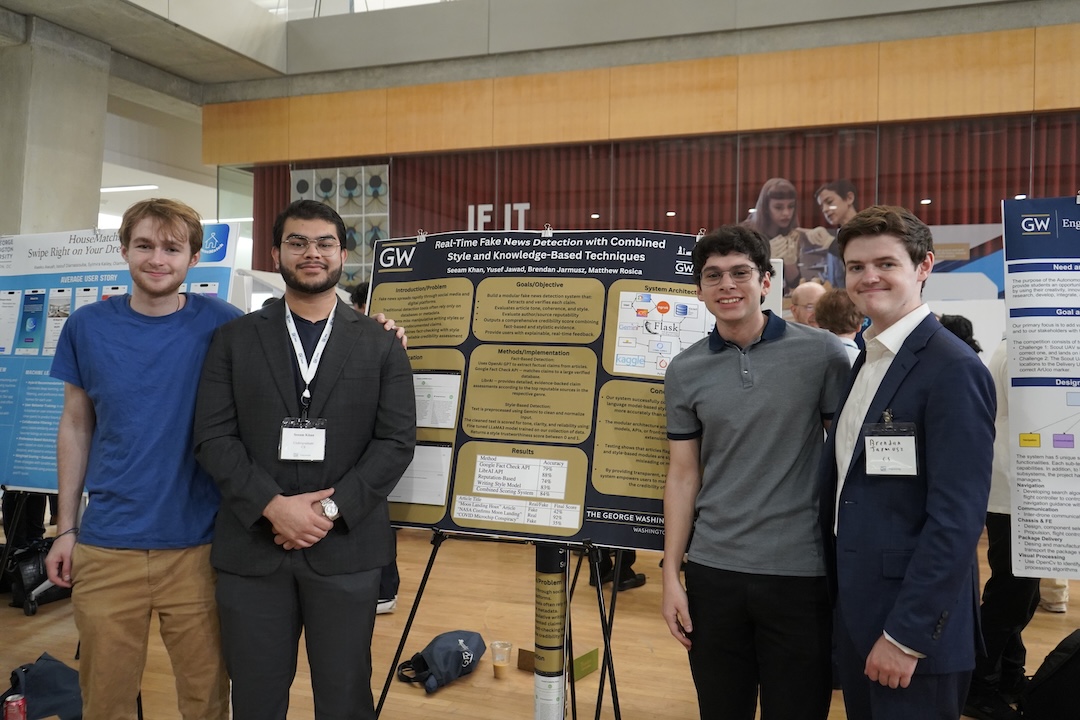Fake News Buster

Project Team
Seeam Khan
Brendan Jarmusz
Yusef Jawad
Matt Rosica
Project Mentor
Katherine Walker
Instructors
Dr. Tim Wood, CS, GW Engineering
Xiaodong Qu, CS, GW Engineering
The project tackles the widespread issue of misinformation and fake news dissemination across digital platforms. With the rise of social media and online news sources, false information spreads rapidly, often influencing public opinion, politics, and even health decisions. Many users struggle to verify the credibility of news articles, leading to the unintentional spread of misinformation. This project aims to address this problem by developing an automated fake news detection system that analyzes news content using machine learning and natural language processing techniques. The system helps users identify misleading or fabricated stories, promoting informed decision-making and reducing the impact of misinformation.
Who experiences the problem?
Misinformation and fake news affect a wide range of individuals across the world, including social media users, journalists, policymakers, and everyday consumers of digital content. With the rapid spread of false information through online platforms, people often struggle to distinguish credible sources from misleading or fabricated stories. This problem is particularly critical for individuals who rely on social media for news, as well as those in regions where misinformation campaigns can influence public opinion, elections, and even public health decisions.
Why is it important?
The spread of fake news can have serious consequences, from undermining democratic processes to causing public panic or harming reputations. False information can sway elections, promote harmful medical misinformation, and even incite violence. As digital platforms continue to grow as primary sources of information, the need for an effective fake news detector becomes increasingly urgent. By providing users with a tool to assess the credibility of news articles, this project aims to reduce misinformation’s impact and promote a more informed society.
What is the coolest thing about your project?
The coolest aspect of this project is its ability to leverage natural language processing (NLP) and machine learning to analyze and detect fake news in real-time. The system not only flags suspicious content but also provides users with explanations based on linguistic patterns, source credibility, and factual cross-referencing. This interactive approach empowers users to make informed decisions while engaging with online content, making misinformation detection more accessible and user-friendly.
What were some technical challenges?
One of the biggest technical challenges is ensuring high accuracy in fake news detection while minimizing false positives and negatives. Since misinformation can be subtle and context-dependent, training the model to recognize nuanced linguistic patterns and evolving misinformation tactics is complex. Additionally, integrating real-time analysis while maintaining efficiency and scalability poses another significant challenge, requiring optimized algorithms and robust data processing techniques.

